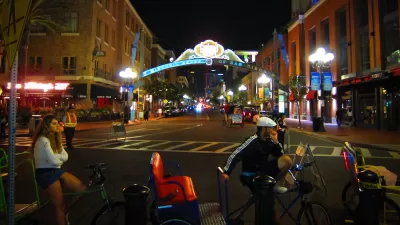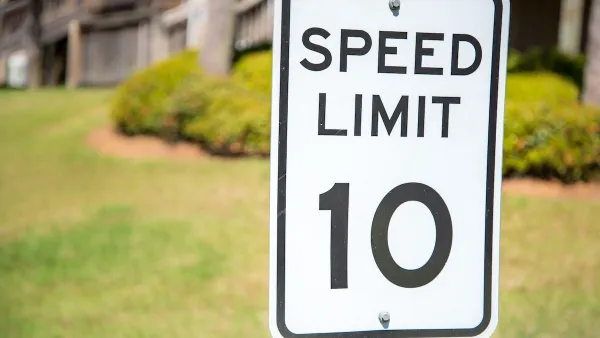Traffic diverters can be designed as a hybrid of permeable greenways and woonerfs to make walking and biking easier, safer, and even more pleasant than driving.
Blogger Shaun Jacobsen celebrates the unintended benefits of a one-way street that has been closed to traffic due to construction: "With so little car traffic, people feel fine crossing wherever they want, or diagonally at intersections. It’s positively pleasant to ride a bicycle…because there’s so little cut-through car traffic."
Though the resulting pedestrian- and bicycle-friendliness, or what Jacobsen refers to as "filtered permeability," is an unintentional result of road construction on his one-way street, Jacobsen recognizes that other streets could benefit by intentionally placing "car traffic diverters": "The best part about making it harder for thru car traffic is that it still permits local traffic to get where it needs to go; longer trips are diverted to arterial roads, keeping drivers off of residential streets, opening them up to people (including families with children) who want to bike safely to the store, the park, and so on...it’s a way to make it easier to make those one- or two-mile trips by a way other than driving there."
To formalize this pedestrian- and bicycle-prioritized flow, Jacobsen recommends, "it should be policy to bring the entire street to the level of the curb and introduce permeable pavement/bioswales for stormwater management, making the street a sort of greenway-woonerf hybrid." He provides a diagram to illustrate his point and notes, "This solution isn’t one designed to get people riding bikes or walking long distances, like to work downtown, but it’s a way to make it easier to make those one- or two-mile trips by a way other than driving there."
FULL STORY: Let’s start blocking off residential streets

Maui's Vacation Rental Debate Turns Ugly
Verbal attacks, misinformation campaigns and fistfights plague a high-stakes debate to convert thousands of vacation rentals into long-term housing.

Planetizen Federal Action Tracker
A weekly monitor of how Trump’s orders and actions are impacting planners and planning in America.

In Urban Planning, AI Prompting Could be the New Design Thinking
Creativity has long been key to great urban design. What if we see AI as our new creative partner?

King County Supportive Housing Program Offers Hope for Unhoused Residents
The county is taking a ‘Housing First’ approach that prioritizes getting people into housing, then offering wraparound supportive services.

Researchers Use AI to Get Clearer Picture of US Housing
Analysts are using artificial intelligence to supercharge their research by allowing them to comb through data faster. Though these AI tools can be error prone, they save time and housing researchers are optimistic about the future.

Making Shared Micromobility More Inclusive
Cities and shared mobility system operators can do more to include people with disabilities in planning and operations, per a new report.
Urban Design for Planners 1: Software Tools
This six-course series explores essential urban design concepts using open source software and equips planners with the tools they need to participate fully in the urban design process.
Planning for Universal Design
Learn the tools for implementing Universal Design in planning regulations.
planning NEXT
Appalachian Highlands Housing Partners
Mpact (founded as Rail~Volution)
City of Camden Redevelopment Agency
City of Astoria
City of Portland
City of Laramie





























